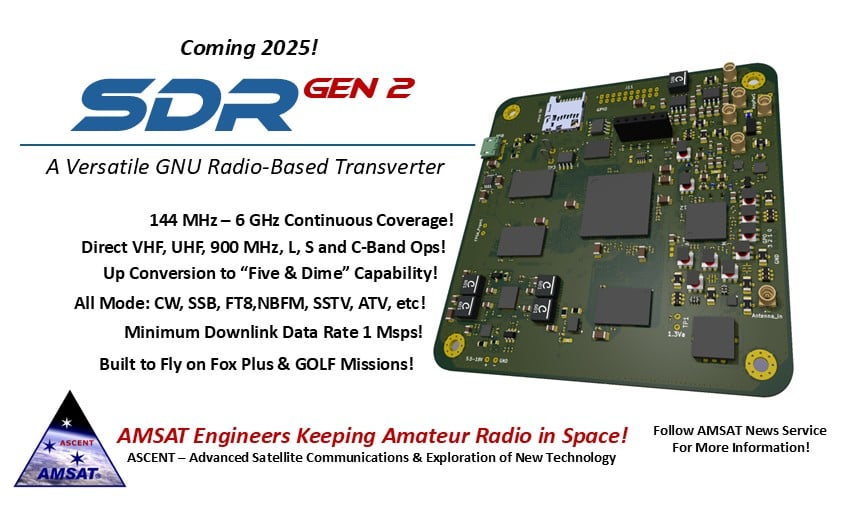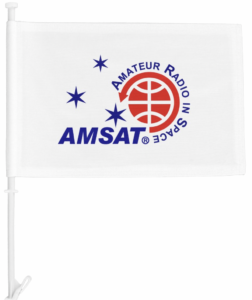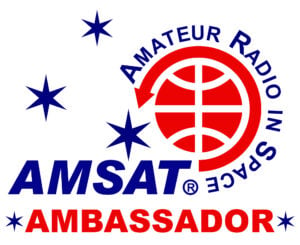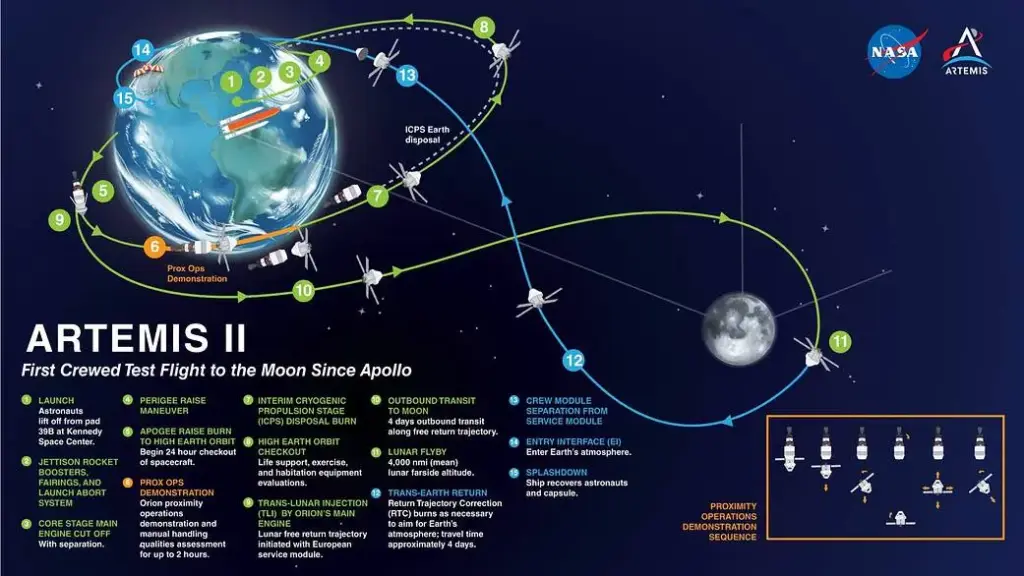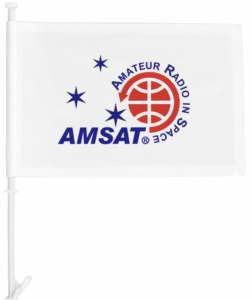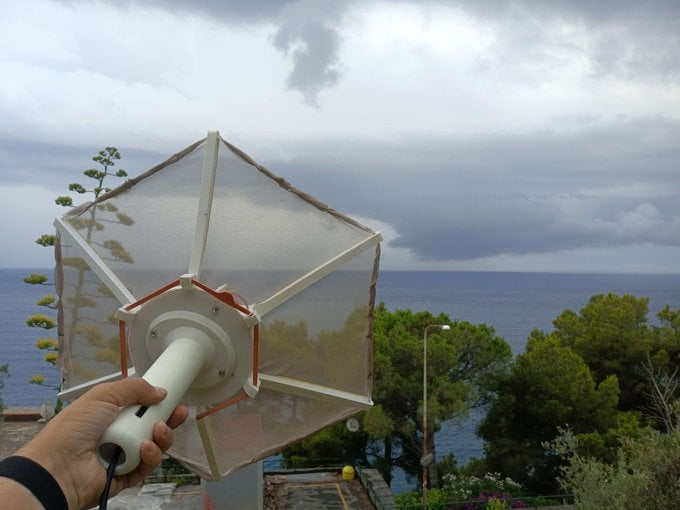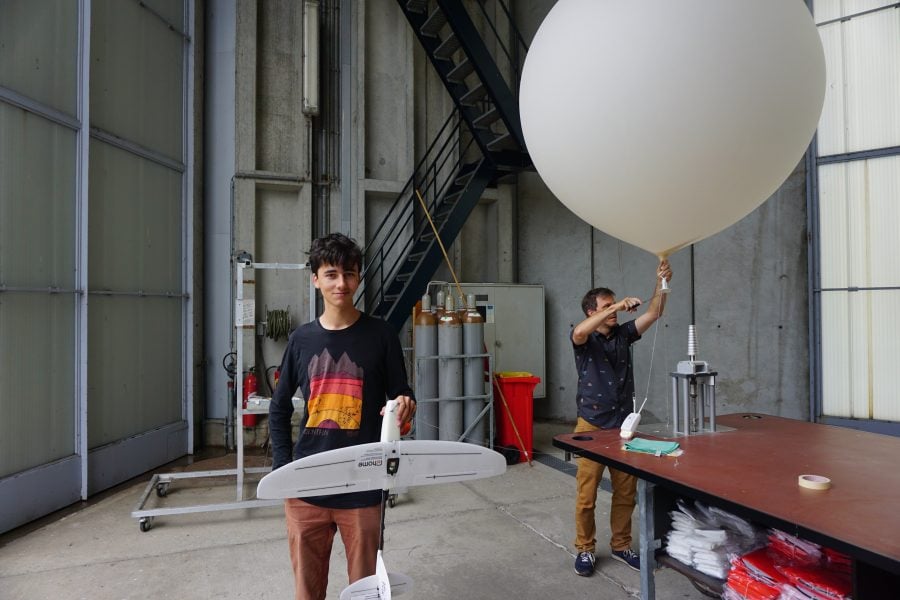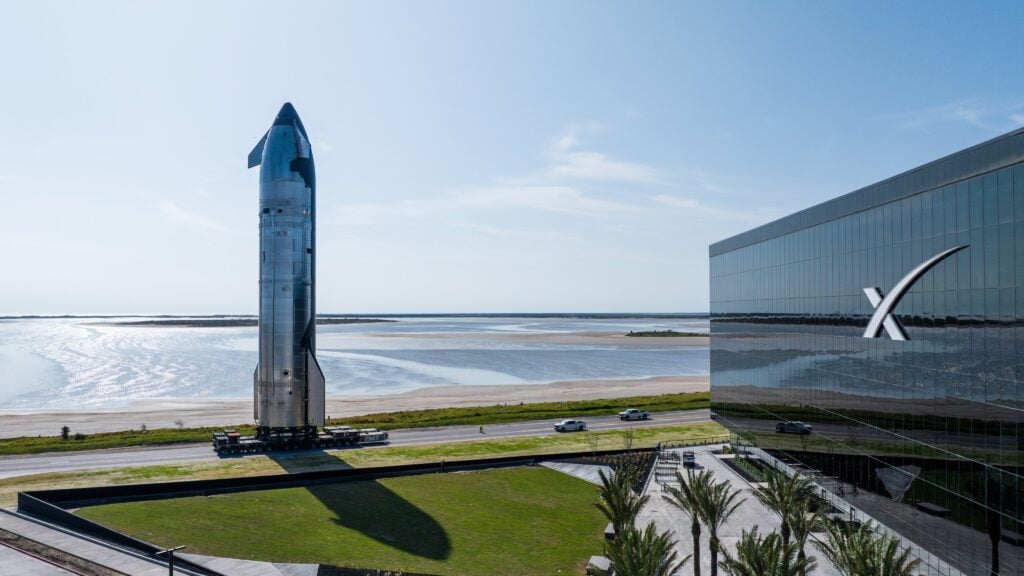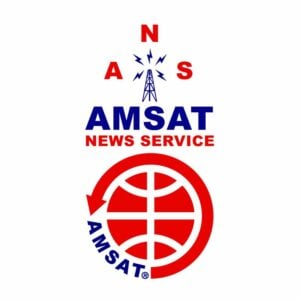
AMSAT News Service
ANS-264
September 21, 2025
In this edition:
* AMSAT 2025 Board of Directors Election Results Announced to Membership
* Special Hotel Rate Deadline is September 24 for AMSAT 43rd Annual Symposium
* AMSAT July/August 2025 AMSAT Journal Now Available for Member Download
* Open Letter from AMSAT-SM Highlights Need for Full Duplex Handheld Radio
* Wow@Home Project Builds Worldwide SDR Telescope Network to Monitor the Sky
* Northrop Grumman’s Cygnus XL Debuts with Record Cargo Delivery to ISS
* Changes to AMSAT-NA TLE Distribution for September 19, 2025
* ARISS News
* AMSAT Ambassador Activities
* Satellite Shorts From All Over
The AMSAT® News Service bulletins are a free, weekly news and information service of AMSAT, The Radio Amateur Satellite Corporation. ANS publishes news related to Amateur Radio in Space including reports on the activities of a worldwide group of Amateur Radio operators who share an active interest in designing, building, launching and communicating through analog and digital Amateur Radio satellites.
The news feed on https://www.amsat.org publishes news of Amateur Radio in Space as soon as our volunteers can post it.
Please send any amateur satellite news or reports to: ans-editor [at] amsat.org
You can sign up for free e-mail delivery of the AMSAT News Service Bulletins via the ANS List; to join this list see: https://mailman.amsat.org/postorius/lists/ans.amsat.org/
AMSAT 2025 Board of Directors Election Results Announced to Membership
The 2025 AMSAT Board of Directors Election concluded on September 15, 2025, with a total of 330 votes cast. Four seats were up for election this year, with the four candidates receiving the highest number of votes elected to two-year terms on the Board of Directors, and the candidate receiving the next highest number of votes designated as Alternate Director for a one-year term.
The following have been elected to serve on the AMSAT Board of Directors:
Drew Glasbrenner, KO4MA – 261 votes
Jerry Buxton, NØJY – 254 votes
Barry Baines, WD4ASW – 245 votes
Frank Karnauskas, N1UW – 232 votes
Alternate Director:
Douglas Tabor, N6UA – 213 votes
The AMSAT Board of Directors is responsible for setting the organization’s strategic direction, overseeing satellite projects and operations, supporting educational outreach, and fostering collaboration with partners worldwide. The Board ensures that AMSAT continues to fulfill its mission of advancing amateur radio in space for the benefit of members and the broader amateur-radio community.
[ANS thanks Doug Tabor, N6UA, AMSAT Secretary, for the above information]
Special Hotel Rate Deadline is September 24 for AMSAT 43rd Annual Symposium
The deadline to reserve a hotel room at the AMSAT special rate for the 43rd Annual Space Symposium and Annual General Meeting is Tuesday, September 24. The discounted rate of $129 plus tax is offered at the Holiday Inn & Suites Phoenix Airport North, located minutes from Phoenix Sky Harbor Airport.
All rooms are two-room suites with a choice of two Queens or one King, and include breakfast, free parking, a free airport shuttle, outdoor pool, brew pub, courtyard, and fully updated rooms. Reservations must be made directly with the hotel using Group Code: P7C, and discounted rooms are limited.
Reservations can be made by calling 877-424-2449 or online at:
https://www.ihg.com/holidayinn/hotels/us/en/phoenix/phxff/hoteldetail
(Select “Group Rate” under Rate Preference and enter P7C before continuing.)
[ANS thanks Frank Karnauskas, N1UW, AMSAT VP – Development, for the above information]
AMSAT July/August 2025 AMSAT Journal Now Available for Member Download
The July/August 2025 edition of The AMSAT Journal is now available to members. The AMSAT Journal is AMSAT’s bi-monthly digital magazine dedicated to amateur radio in space. Each issue features technical articles, educational initiatives, operating activities, and community news from around the world. Members can access both the latest edition and the full archive through the AMSAT member portal.
Inside the Current Issue: Apogee View – Robert Bankston, KE4AL; Educational Relations Update – Alan Johnston, KU2Y; AMSAT Field Day 2025 Results – Bruce Paige, KK5DO; An Amateur Radio Eye on AI – Joe Kornowski, KB6IGK; Experimental Validation of the Mexican Network of Amateur Satellite Stations (REMEASAT) – Omar Álvarez Cárdenas, XE1AO, et al.
This issue opens with Robert Bankston, KE4AL, delivering his final Apogee View column as AMSAT President. Bankston reflects on five years of leadership, thanking members and volunteers for their dedication while emphasizing the need to continue pushing forward with higher orbits, expanded communications, and vigilance in protecting amateur frequencies. Educational outreach is another key theme, with Alan Johnston, KU2Y, providing updates on the CubeSatSim project, STEM activity guides, and recent demonstrations in the U.S. and Australia. He also previews educational sessions at both the AMSAT Space Symposium and AMSAT-UK Colloquium this October.
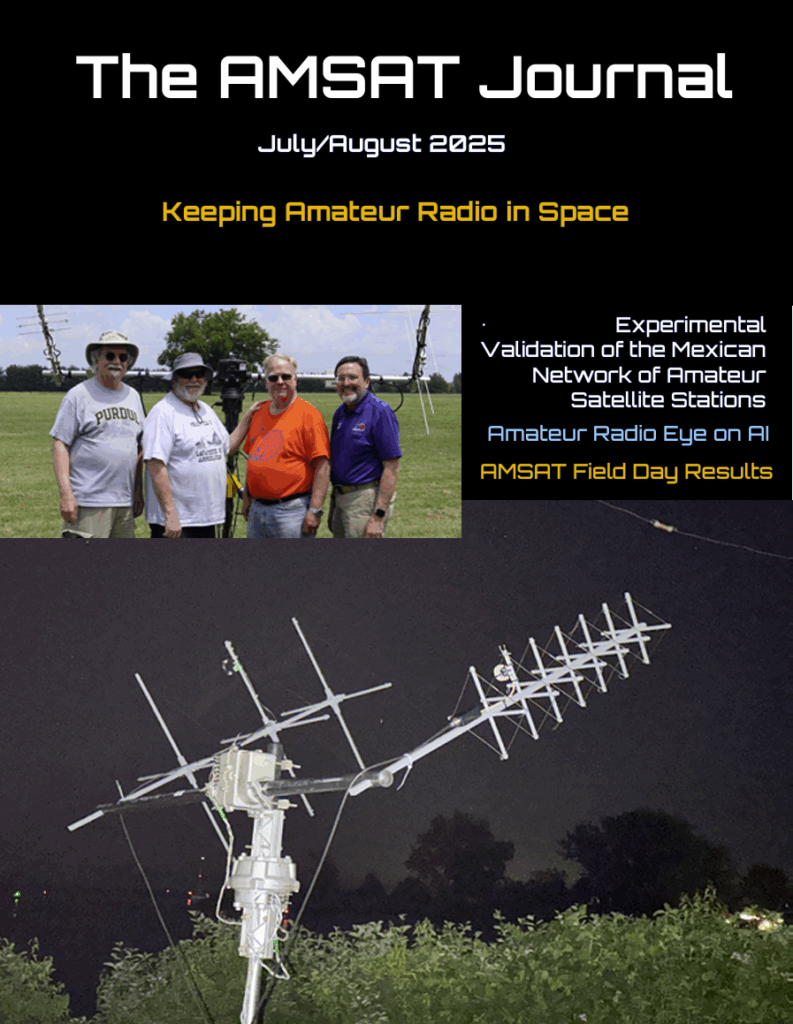
Contest enthusiasts will enjoy Bruce Paige’s, KK5DO, detailed report on the 2025 AMSAT Field Day. This year saw seventeen participating stations with highlights including innovative setups, first-time satellite contacts, and several memorable QSOs with the ISS. Other technical features include Joe Kornowski’s article, An Amateur Radio Eye on AI, exploring practical applications of artificial intelligence for weak-signal decoding, propagation forecasting, and antenna optimization, as well as a comprehensive study on the Experimental Validation of the Mexican Network of Amateur Satellite Stations (REMEASAT), showcasing citizen-science collaboration across Mexico and beyond.
Beyond the feature articles, the issue also highlights upcoming events such as the 43rd Annual AMSAT Space Symposium & Annual General Meeting, scheduled for October 16–19 in Phoenix, Arizona. Members will also find announcements on opportunities to support AMSAT through the President’s Club and eBay for Charity initiatives, reflecting the many ways volunteers and donors continue to strengthen AMSAT’s mission of keeping amateur radio in space.
AMSAT members can access the July/August 2025 edition and archived issues at: https://launch.amsat.org/The_AMSAT_Journal
[ANS thanks Joe Kornowski, KB6IGK, Editor-in-Chief of The AMSAT Journal, for the above information]
Open Letter from AMSAT-SM Highlights Need for Full Duplex Handheld Radio
In August, the AMSAT-SM group in Sweden issued an open letter to several major amateur radio manufacturers calling for the development of a new handheld transceiver with true full duplex capability. The initiative, led by Lars Thunberg, SM0TGU, highlights the strong demand within the satellite operating community for modern equipment that supports simultaneous transmit and receive on different bands without desense.
The letter was sent to a dozen manufacturers, including Icom, Kenwood, Yaesu, Alinco, Baofeng, TYT, Wouxun, Retevis, AnyTone, QYT, Radtel, and Verotelecom. These companies represent both long-established Japanese firms and newer Chinese brands that have introduced a wide variety of handhelds in recent years. While today’s radios often feature APRS, GPS, Bluetooth, and USB-C charging, none currently provide the full duplex FM capability needed for effective satellite operation.
AMSAT-SM emphasized that full duplex operation is vital for amateur satellite use, allowing operators to hear their own downlink while transmitting. This feature was present in older, now-discontinued models such as the Kenwood TH-D72, but is missing from all currently produced handhelds. The group argued that satellite operators would be willing to pay a premium for this capability, and that manufacturers could capture a unique market by stepping into this space.
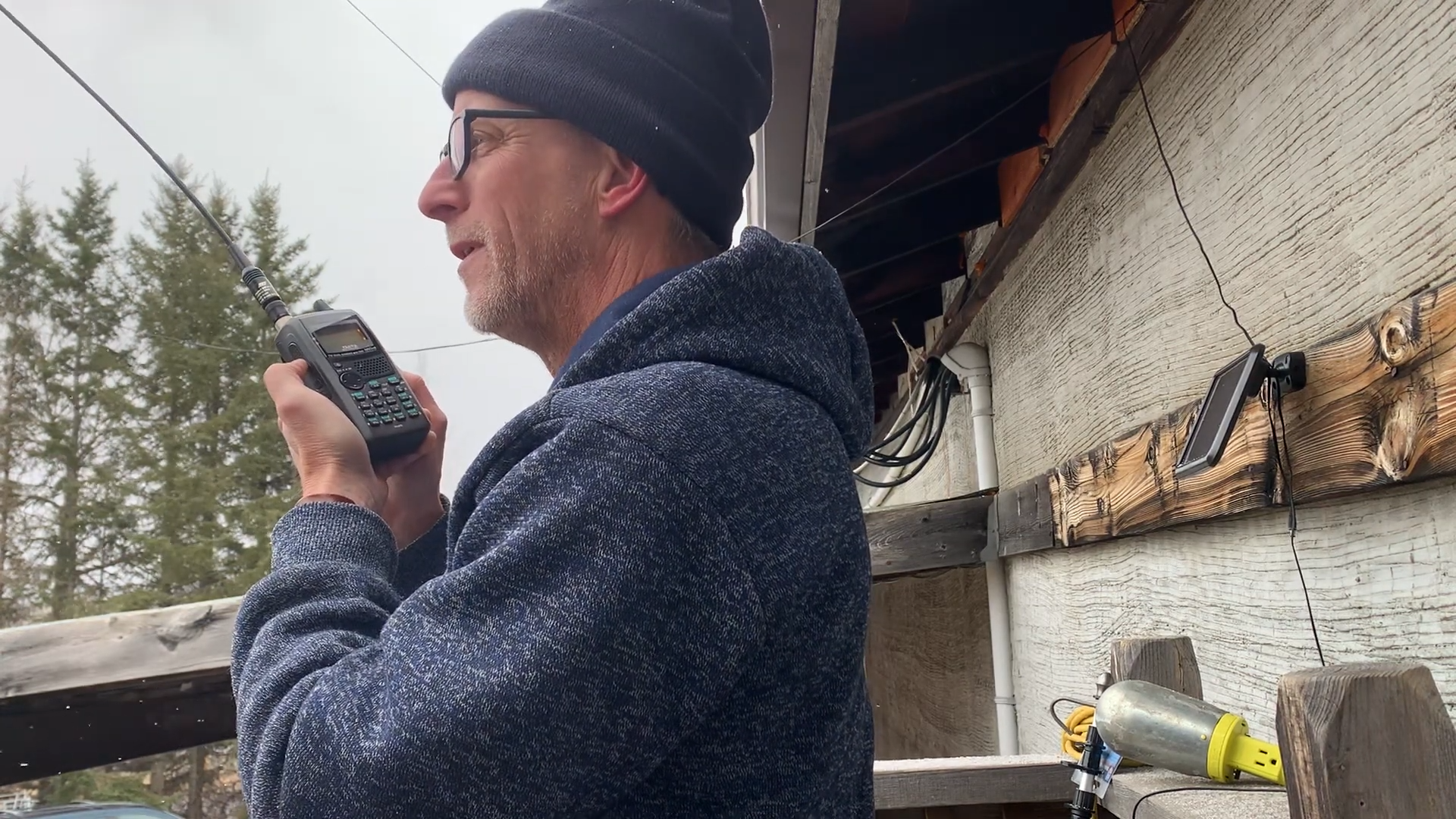
AMSAT-SM further suggested several “nice to have” features that could broaden the radio’s appeal. These included APRS with GPS, Bluetooth support for wireless headsets, and computer connectivity over Bluetooth for channel programming and Doppler control. The group specifically recommended implementing the CAT protocol over Bluetooth, which would allow operators to use existing satellite tracking and Doppler correction software without proprietary apps.
As of August 30, AMSAT-SM reported that three of the twelve manufacturers contacted had responded to their appeal, with one company moving forward in discussions. While details remain confidential, the group encourages operators to stay tuned for updates. The effort reflects both the continuing innovation within the amateur satellite community and the strong desire for modern, purpose-built equipment to support space-based communication.
Read the full letter at: https://www.amsat.se/2025/08/16/open-letter-from-amsat-sm-regarding-development-of-a-full-duplex-handheld/
[ANS thanks Lars Thunberg, SM0TGU and AMSAT-SM for the above information]
AMSAT Remove Before Flight Key Tags Now Available
Yes, These are the Real Thing!
Your $20 Donation Goes to Help Fly a Fox-Plus Satellite
Includes First Class Postage (Sorry – U.S. Addresses Only)
Order Today at https://www.amsat.org/product/amsat-remove-before-flight-keychain
Wow@Home Project Builds Worldwide SDR Telescope Network to Monitor the Sky
The Wow@Home project, inspired by the famous “Wow!” signal detected in 1977, is advancing its effort to establish a global network of small, software defined radio (SDR) telescopes dedicated to searching for transient astrophysical events and potential technosignatures. Testing of hardware and software continues, though progress has been slowed by a shortage of low-noise amplifiers (LNAs), a key component expected back in stock later this month. Project organizers note that the original Wow! signal was strong enough to have been detected by a modest home telescope, underscoring the scientific value of a distributed approach.
A worldwide network of small radio telescopes offers distinct advantages compared to professional observatories. These low-cost systems can operate autonomously around the clock, providing continuous sky monitoring that large instruments cannot sustain. Distributed across different time zones, the network allows global coverage, coincidence detection of events, and rapid response to alerts. The approach is scalable, resilient, and accessible, making it ideal for education, citizen science, and wider participation in radio astronomy.
The prototype Wow@Home telescope is a meridian-style system modeled after the Big Ear telescope used in the Ohio State SETI project. With a fixed elevation and a wide 25-degree beam, the telescope surveys a full 360-degree strip of sky each day as the Earth rotates. Over time, multiple passes yield full-sky coverage. While sensitivity is lower than professional instruments, this design provides valuable data on radio frequency interference (RFI) near the hydrogen line and creates a platform for detecting strong transient events.
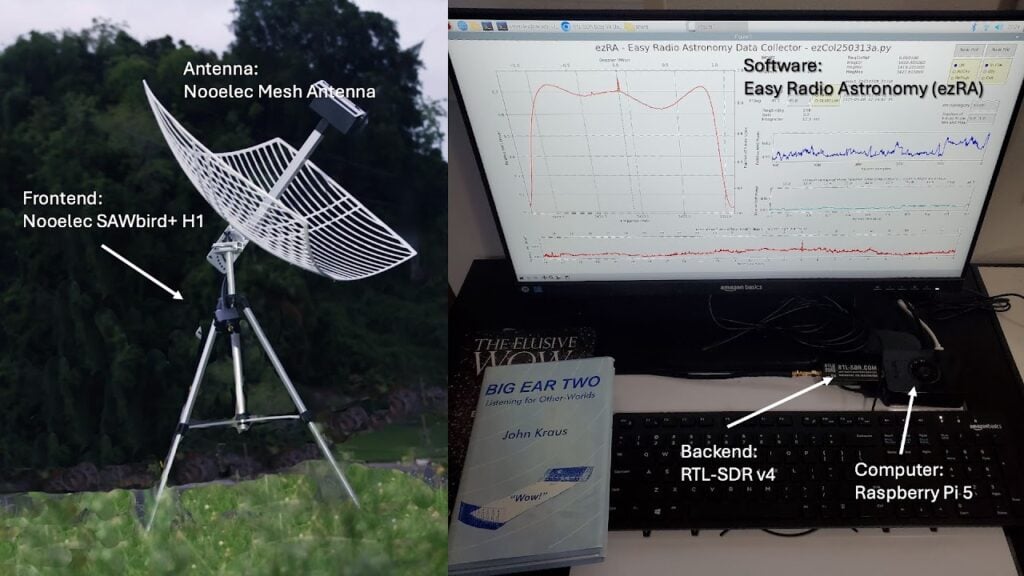
The Wow@Home network is not an interferometer and does not measure polarization at this stage. Its strength lies in continuous, distributed monitoring for signals lasting from seconds to days. Coordinated observations across multiple sites can confirm weak or short-lived events, eliminate local interference, and provide complementary coverage to large observatories. Recent discoveries of Fast Radio Bursts and long-period transients illustrate the types of phenomena that modest instruments may detect if deployed widely.
Looking ahead, organizers estimate that at least 114 telescopes are required for basic sky coverage, with about 342 needed for effective redundancy and RFI rejection. At a cost of roughly $500 per station, the full network could be established for under $200,000—far less than a single professional facility. A public version of the Wow@Home software is expected by late 2025 or early 2026. Volunteers with expertise in RFI mitigation, graphical interfaces, or app development are encouraged to contribute. More information is available from project lead Abel Méndez at the University of Puerto Rico (abel.mendez [at] upr.edu).
Project details and updates are available at: https://phl.upr.edu/wow/outreach
[ANS thanks Abel Mendez, University of Puerto Rico at Arecibo, and RTL-SDR.com for the above information]
Northrop Grumman’s Cygnus XL Debuts with Record Cargo Delivery to ISS
Northrop Grumman’s newest cargo spacecraft, the Cygnus XL, successfully arrived at the International Space Station (ISS) on September 18 following its debut launch. The capture took place at 7:24 a.m. EDT (1124 UTC) as NASA astronaut Jonny Kim operated the station’s Canadarm2 robotic arm to grapple the freighter while the complex orbited about 260 miles (420 kilometers) above the Democratic Republic of Congo. The arrival came one day later than originally planned after the spacecraft overcame a thruster issue during rendezvous preparations.
The mission, designated NG-23, lifted off on September 14 aboard a SpaceX Falcon 9 rocket from Cape Canaveral Space Force Station. This launch marked the 23rd Cygnus resupply flight for NASA, continuing Northrop Grumman’s role in commercial cargo delivery. The company partnered with SpaceX to provide launch services after previously relying on its Antares rocket.
A thruster anomaly initially delayed Cygnus XL’s approach, requiring mission planners to rework the trajectory for a safe capture. “It’s a very intricate planning exercise that we have to go through to arrive at Space Station and rendezvous in a very specific point in space,” explained Bill Spetch, NASA ISS operations integration manager. Engineers resolved the issue, allowing the spacecraft to complete its final maneuvers and reach the station safely.
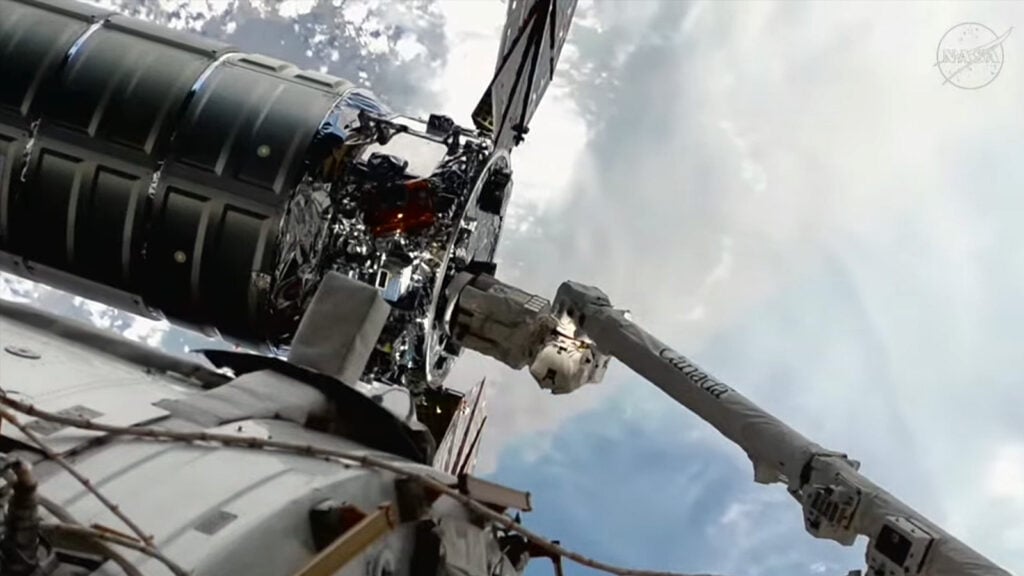
Cygnus XL represents the largest and most capable version of the cargo vehicle to date. The freighter delivered approximately 11,000 pounds (4,990 kilograms) of supplies, science experiments, and hardware, compared to about 8,500 pounds (3,855 kilograms) on earlier flights. The debut also ended a year-long gap in Cygnus operations, caused by delays to the NG-22 mission, which was ultimately canceled following transport damage.
The NG-23 vehicle was christened the S.S. William “Willie” McCool, honoring the NASA astronaut who lost his life in the 2003 space shuttle Columbia tragedy. “To see a ship bearing his name safely arrive at the station is a reminder that his courage and kindness are still circling our beautiful planet Earth,” said Kim after completing capture operations.
On board are materials to advance research in multiple disciplines, including semiconductor crystal growth, pharmaceutical manufacturing, cryogenic fuel tank technology, and microbial control systems. NASA highlighted a specialized ultraviolet light unit to improve water system safety and crystal-growth experiments that could lead to new cancer treatments. The S.S. McCool was berthed to the Unity module’s Earth-facing port at 10:10 a.m. EDT (1410 UTC) on September 18 and is scheduled to remain at the ISS until March 2026 before deorbiting to burn up in Earth’s atmosphere.
[ANS thanks Mike Wall, Space.com for the above information]
The 2025 AMSAT President’s Club Coins Have Just Arrived!
Celebrating the 40th Anniversary of Amateur Radio on Human Spaceflight
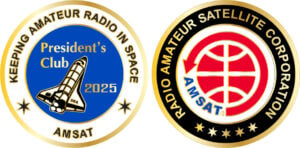
Help Support GOLF and Fox Plus.
Join the AMSAT President’s Club today!
Changes to AMSAT TLE Distribution for September 19, 2025
Two Line Elements or TLEs, often referred to as Keplerian elements or keps in the amateur community, are the inputs to the SGP4 standard mathematical model of spacecraft orbits used by most amateur tracking programs. Weekly updates are completely adequate for most amateur satellites. TLE bulletin files are updated daily in the first hour of the UTC day. New bulletin files will be posted immediately after reliable elements become available for new amateur satellites. More information may be found at https://www.amsat.org/keplerian-elements-resources/.
This week there are no additions or deletions to the AMSAT TLE distribution.
[ANS thanks Joe Fitzgerald, KM1P, AMSAT Orbital Elements Manager, for the above information.]
ARISS News
Amateurs and others around the world may listen in on contacts between amateurs operating in schools and allowing students to interact with astronauts and cosmonauts aboard the International Space Station. The downlink frequency on which to listen is 145.800 MHz worldwide.
Scheduled Contacts
+ Recently Completed
Taka Town Board of Education Children’s Future Division, Taka Town, Japan, direct via JA3YRL
The ISS callsign was OR4ISS
The scheduled crewmember was Kimiya Yui KG5BPH
The ARISS mentor was 7M3TJZ
Contact was successful: Thu 2025-09-11 09:22:34 UTC
Congratulations to the Taka Town Board of Education Children’s Future Division students, Kimiya KG5BPH, mentor 7M3TJZ, and ground station JA3YRL!
National Space Research and Development Agency (NASRDA), Abuja, Nigeria, telebridge via ZS6JON
The ISS callsign was NA1SS
The scheduled crewmember was Zena Cardman KJ5CMN
The ARISS mentor was IN3GHZ
Contact was successful: Sat 2025-09-20 09:37:23 UTC
Congratulations to the NASRDA students, Zena KJ5CMN, mentor IN3GHZ, and ground station ZS6JON!
+ Upcoming Contacts
Amur State University, Blagoveshchensk, Russia, direct via TBD
The ISS callsign is presently scheduled to be RSØISS
The scheduled crewmember is Oleg Platonov
The ARISS mentor is RV3DR
Contact is go for: Wed 2025-09-24 10:00 UTC
Many times a school may make a last-minute decision to do a Livestream or run into a last-minute glitch requiring a change of the URL but we at ARISS may not get the URL in time for publication. You can always check https://live.ariss.org/ to see if a school is Livestreaming.
As always, if there is an EVA, a docking, or an undocking; the ARISS radios are turned off as part of the safety protocol.
The crossband repeater continues to be active (145.990 MHz up {PL 67} & 437.800 MHz down), If any crewmember is so inclined, all they have to do is pick up the microphone, raise the volume up, and talk on the crossband repeater. So give a listen, you just never know.
Note, all times are approximate. It is recommended that you do your own orbital prediction or start listening about 10 minutes before the listed time.
The latest information on the operation mode can be found at https://www.ariss.org/current-status-of-iss-stations.html
The latest list of frequencies in use can be found at https://www.ariss.org/contact-the-iss.html
[ANS thanks Charlie Sufana, AJ9N, one of the ARISS operation team mentors for the above information.]
AMSAT Ambassador Activities
AMSAT Ambassadors provide presentations, demonstrate communicating through amateur satellites, and host information tables at club meetings, hamfests, conventions, maker faires, and other events.
AMSAT Ambassador Clint Bradford, K6LCS, says,
“Think a 75-minute presentation on “working the easy satellites” would be appropriate for your club or event? Let me know by emailing me at k6lcsclint (at) gmail (dot) com or calling me at 909-999-SATS (7287)!”
Clint has NEVER given the exact same show twice: EACH of the 150+ presentations so far has been customized/tailored to their audiences.
Scheduled Events
Radio Society of Tucson Autumn Hamfest – September 27, 2025
Calvary Lutheran Church
8711 East Speedway Boulevard
Tucson, AZ 85710
https://k7rst.club/2025/08/rst-autumn-hamfest-2025/
N1UW
North Star Radio Convention – October 11, 2025
Hennepin Technical College
9000 Brooklyn Boulevard
Brooklyn Park, MN 55445
https://northstarradio.org/
ADØHJ
43rd Annual AMSAT Space Symposium & Annual General Meeting – October 16 thru 19, 2025
Holiday Inn & Suites Phoenix Airport North
1515 North 44th Street
Phoenix, Arizona 85008
Details at https://www.amsat.org/2025-symposium/
Interested in becoming an AMSAT Ambassador? AMSAT Ambassadors provide presentations, demonstrate communicating through amateur satellites, and host information tables at club meetings, hamfests, conventions, maker faires, and other events.
For more information go to: https://www.amsat.org/ambassador/
[ANS thanks Bo Lowrey, W4FCL, Director – AMSAT Ambassador Program, for the above information.]
Satellite Shorts from All Over
+ A recent experiment demonstrated that a Bitcoin Lightning payment invoice can be relayed through the amateur radio satellite QO-100, showcasing a new use of its wideband digital transponder. The test employed the AMSAT-DL Multimedia High-Speed Modem to convert a BOLT11 Lightning invoice into an image file, modulate the data, and uplink it to QO-100 at 25.5°E in geostationary orbit. After rebroadcast to Earth, the file was decoded by ground stations, the QR code was scanned, and the Lightning Network completed the payment settlement over the internet. For amateur satellite operators, the project highlights QO-100’s ability to serve as a versatile platform for high-speed digital and multimedia experimentation. By carrying a novel real-world application such as a cryptocurrency invoice, the satellite demonstrates how amateur payloads can support resilience testing for communications under censorship, outages, or disaster conditions. Though still limited to technically capable stations within the satellite’s footprint, the milestone illustrates the expanding scope of amateur radio satellite experimentation. (ANS thanks The Currency Analytics for the above information)
+ Astronomers have observed a collision between two black holes, GW250114, in unprecedented detail, confirming long-standing predictions made by Albert Einstein and Stephen Hawking. Detected by the twin LIGO observatories in Louisiana and Washington, the event produced gravitational waves first theorized by Einstein in 1915, generated as the two black holes — each about 30–35 solar masses — spiraled inward and collided. Their violent merger created a remnant roughly 63 times the mass of the Sun, spinning at 100 revolutions per second, while sending a powerful burst of gravitational energy across the universe. For the first time, researchers clearly detected the “ringing” tones of the new black hole, validating Roy Kerr’s theory that such objects can be fully described by just mass and spin. The observation also confirmed Hawking’s 1971 surface area theorem, which states that black hole area can never decrease after a merger, a cornerstone concept in modern physics. Improved LIGO sensitivity, now more than three times greater than a decade ago, made this high-clarity detection possible. The findings mark a milestone in gravitational-wave astronomy and offer scientists a sharper tool for probing the fundamental nature of space and time. (ANS thanks CNN for the above information)
+ SpaceX is preparing to begin testing direct-to-device satellite communications late next year, following its $17 billion acquisition of S-band spectrum from EchoStar. Company president Gwynne Shotwell told attendees at World Space Business Week in Paris that this spectrum will support an entirely new generation of Starlink satellites designed for global handheld connectivity. SpaceX is already working with chip manufacturers to embed compatibility into consumer smartphones and with mobile network operators to deliver wholesale satellite capacity to their subscribers. Shotwell emphasized that owning globally cleared spectrum avoids the “clunky” process of negotiating national rights and provides a more streamlined way to cross international borders. She called the effort the beginning of a major technical push, requiring new payload designs and close partnerships across the telecom sector. These larger Starlink satellites are planned for future launches aboard Starship, which is now progressing toward its next test flights as the platform for next-generation payloads. (ANS thanks SpaceNews for the above information)
Join AMSAT today at https://launch.amsat.org/
In addition to regular membership, AMSAT offers membership to:
- Societies (a recognized group, clubs or organization).
- Primary and secondary school students are eligible for membership at one-half the standard yearly rate.
- Post-secondary school students enrolled in at least half-time status shall be eligible for the student rate for a maximum of 6 post-secondary years in this status.
- Memberships are available for annual and lifetime terms.
Contact info [at] amsat.org for additional membership information.
73 and remember to help Keep Amateur Radio in Space!
This week’s ANS Editor,
Mitch Ahrenstorff, ADØHJ
mahrenstorff [at] amsat.org
ANS is a service of AMSAT, the Radio Amateur Satellite Corporation, 712 H Street NE, Suite 1653, Washington, DC 20002
AMSAT is a registered trademark of the Radio Amateur Satellite Corporation.


